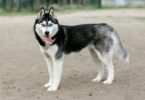Did you know 60% of hybrid dog owners choose breeds like the golden labradoodle for their hypoallergenic coats? This popular crossbreed combines the best traits of two beloved dogs: the Labrador Retriever’s playful energy and the Poodle’s intelligence.
Designed for families and allergy sufferers, these curly-coated companions have surged in popularity over the last decade. Their low-shedding fur makes them ideal for households seeking minimal pet dander. Beyond practicality, they’re celebrated for their loyal personalities and adaptability to various living environments.
This guide explores everything you need to know about the breed. You’ll discover their origins, physical characteristics, and temperament. Practical tips cover training strategies tailored to their eager-to-please nature and grooming routines to maintain that signature wavy coat.
Whether you’re considering adoption or already own one of these affectionate pets, this resource offers actionable advice. From nutritional needs to exercise requirements, we break down how to keep your doodle happy and healthy at every life stage.
Origin and Breed Overview
Australian breeder Wally Conron sparked the designer dog movement in 1989 when he crossed a Labrador Retriever with a Standard Poodle. This intentional mix aimed to create guide dogs with hypoallergenic coats for vision-impaired individuals with allergies. The experiment succeeded beyond expectations, laying the foundation for modern hybrid breeds.
History and Hybrid Beginnings
Early labradoodles combined the Labrador’s trainability with the Poodle’s low-shedding fur. Breeders soon recognized their potential as family pets due to their friendly nature and reduced dander production. By the early 2000s, these crosses became sought-after companions across the United States.
Comparing Labradoodle, Goldendoodle & Other Mixes
While labradoodles and goldendoodles share Poodle ancestry, their retriever parentage differs. Goldendoodles descend from Golden Retrievers, often producing slightly curlier coats. Both mixes excel as therapy dogs, but labradoodles typically maintain more consistent sizing across generations.
Modern designer breeds prioritize specific traits through selective breeding. Reputable breeders like those from the Australian Labradoodle Association focus on temperament consistency and health testing. This careful approach helps maintain the breed’s desirable qualities while minimizing genetic issues.
Distinctive Appearance and Coat Characteristics
These crossbreeds showcase remarkable coat diversity shaped by their Poodle and Labrador heritage. Their fur ranges from loose waves to tight curls, with textures evolving as puppies mature into adults. This variety ensures no two dogs look exactly alike.
Unique Coat Colors and Patterns
Sun-kissed shades dominate their color palette. Common options include creamy gold, warm apricot, and rich caramel. Some display subtle gradients or solid tones, while others have white markings on their chests or paws. Unlike many breeds, their coats often lighten or darken slightly during the first two years.
Grooming Essentials for Every Coat Type
Wavy coats require brushing every 3 days to prevent tangles, while curly types need daily attention. Professional trimming every 6-8 weeks maintains shape and reduces matting. Use slicker brushes for curls and wide-tooth combs for waves.
Regular grooming sessions do more than enhance appearance – they minimize allergens by removing loose hairs and dander. This makes proper coat care crucial for households managing allergies. Always check ears and paw pads during brushing to prevent debris buildup.
Temperament and Personality of the Golden Labradoodle
These curly-coated companions shine brightest in social settings. Their adaptable nature makes them equally comfortable playing fetch with kids or snuggling with seniors. This versatility stems from a unique blend of enthusiasm and emotional awareness.
Family-Friendly and Social Nature
Four-legged social butterflies thrive in households with multiple family members. Their patient temperament allows gentle interactions with children, while their alertness provides natural companionship for adults. Many owners report their pets intuitively match energy levels to different situations.
Sharp intelligence drives their eagerness to learn commands and solve puzzles. This cognitive strength makes training sessions productive and enjoyable. Food-motivated behavior helps reinforce positive habits during obedience practice.
Strong bonds form quickly with both people and other animals. Regular interaction strengthens these connections, creating loyal protectors of their “pack”. Therapy roles showcase their balanced nature – energetic during playtime yet calm during emotional support tasks.
Morning zoomies often give way to afternoon naps, demonstrating their ability to adapt to home routines. This mix of playfulness and stability makes them ideal for diverse living situations. Whether guiding the visually impaired or comforting anxious students, their behavior consistently proves reliable.
Health Considerations for the Golden Labradoodle
Preventive care is key to managing hereditary conditions in crossbreeds. Owners should prioritize regular veterinary assessments to catch potential issues early. A 2023 study showed dogs with annual check-ups live 1.5 years longer on average than those without consistent care.
Common Health Issues and Early Detection
Hip dysplasia affects 12% of medium-sized hybrids, causing joint pain and mobility challenges. Progressive retinal atrophy (PRA) is another concern – this eye condition can lead to vision loss if undetected. Schedule bi-annual vet visits to monitor for these issues through physical exams and diagnostic imaging.
Watch for subtle signs like reluctance to jump or cloudy eyes. Early intervention often improves outcomes significantly. Genetic testing helps identify predispositions during puppyhood, allowing tailored care plans.
Preventive Care and Responsible Breeding
Reputable breeders screen parent dogs for PRA and hip dysplasia through organizations like OFA. Always request health clearances before adoption. Pair these checks with daily exercise routines to maintain healthy joints and weight.
Feed high-quality food rich in omega fatty acids to support coat and eye health. Mental stimulation through puzzle toys reduces stress-related behaviors. Consistent care from trusted professionals ensures your companion thrives through every life stage.
Effective Training Strategies for Your Golden Labradoodle
Smart training approaches harness this hybrid’s natural smarts and desire to please. Professional trainers emphasize starting lessons early – puppies as young as 8 weeks can learn basic commands. Structured routines paired with fun interactions create confident companions who thrive in various settings.
Positive Reinforcement Techniques
Reward-based methods yield fast results with these eager learners. Start with 5-minute sessions using high-value treats for simple commands like “sit” and “stay.” Clicker training works exceptionally well – the distinct sound marks exact moments of correct behavior. Gradually phase out food rewards by replacing them with praise and playtime.
Early Socialization and Consistency
Expose puppies to diverse experiences between 3-16 weeks. Introduce 2-3 new people weekly and visit pet-friendly stores. Practice handling paws and ears daily to prepare for grooming. Maintain consistent verbal cues across all family members – say “down” instead of “off” every time.
Trainers recommend scheduling sessions before meals when focus peaks. Keep lessons upbeat, ending on successes to build confidence. Pair obedience practice with puzzle toys to stimulate mental growth. These strategies help shape adaptable pets ready for life’s adventures.
Grooming and Maintenance Practices
The secret to a tangle-free coat lies in understanding your dog’s unique fur texture and needs. Different coat types require tailored approaches, from wavy patterns needing minimal upkeep to dense curls demanding meticulous care. Regular maintenance prevents skin issues and keeps your companion comfortable year-round.
Daily Brushing and Professional Grooming Routines
Use a slicker brush for curly coats, working in sections to remove debris. Start at the skin and brush outward to prevent matting. Wavy fur benefits from weekly sessions with a stainless-steel comb. Always check for hidden tangles behind ears and under legs.
Professional groomers become essential every 6-8 weeks for intricate trims or severe mats. Curly-coated dogs often need expert shaping to maintain airflow to the skin. Look for certified groomers experienced with hybrid breeds – their skills prove invaluable for maintaining coat health.
Don’t overlook basic hygiene between grooming appointments. Trim nails monthly using guillotine-style clippers. Clean ears weekly with vet-approved solutions to prevent infections. Dental chews or brushing 3x weekly combat plaque buildup. For detailed guidance on coat variations, explore our mini labradoodle care guide.
Watch for redness between paw pads or excessive scratching – these signal skin irritation. Immediate attention prevents minor issues from escalating. Consistent care routines enhance your pet’s comfort while strengthening your bond through positive touch experiences.
Nutrition, Diet, and Exercise Essentials
Proper nourishment and activity form the foundation of a thriving canine companion. Owners must balance high-quality food with engaging movement to support their pet’s energy levels and cognitive function.
Balanced Diet Guidelines
Feed puppies three measured meals daily using protein-rich formulas (25-30% content). Adults thrive on two portions of kibble with joint-supporting nutrients like glucosamine. Avoid free-feeding to prevent weight gain – use a kitchen scale for accuracy.
Incorporate omega-3 sources such as salmon or flaxseed to maintain coat health. Treats shouldn’t exceed 10% of daily calories. Always provide fresh water, especially after exercise sessions.
Activity Requirements
These energetic hybrids need 60+ minutes of daily movement. Mix brisk walks with swimming or fetch games. Mental challenges prove equally vital – rotate puzzle toys weekly to prevent boredom.
Combine physical and cognitive tasks through agility courses or scent work. Consistent routines help regulate metabolism and mood. Studies show structured diet and activity plans can prolong your dog’s lifespan by reducing obesity-related risks.
Final Thoughts on a Fulfilling Life with Your Golden Labradoodle
Welcoming a curly-coated companion into your life transforms daily routines into moments of joy. These intelligent hybrids thrive when their physical needs and mental curiosity receive equal attention through playtime, training, and affection.
Creating a happy home starts with consistency. Regular grooming sessions become bonding opportunities, while structured meal times support lifelong health. Small daily efforts – like 10-minute training refreshers – strengthen communication and trust over time.
Owners who embrace their pet’s energetic spirit often discover unexpected benefits. Morning walks boost your own activity levels, and puzzle toys challenge both human and canine minds. This mutual growth fosters deeper connections that enrich every day.
Investing time in proper care yields lasting rewards. A well-socialized companion adapts seamlessly to family gatherings, travel adventures, or quiet evenings. Their intuitive nature makes them attuned to household rhythms, creating harmony in shared spaces.
Ultimately, life with these affectionate dogs becomes a tapestry of shared experiences. From muddy paw prints to contented sighs at bedtime, each day celebrates the unique bond between owner and pet. With patience and care, your home transforms into a haven of wagging tails and cherished memories.
FAQ
Are Golden Labradoodles hypoallergenic?
While no dog is fully hypoallergenic, their poodle ancestry often results in low-shedding coats. Regular grooming and cleaning routines minimize allergens, making them a better option for allergy-prone households compared to many breeds.
What’s the difference between a Labradoodle and a Goldendoodle?
Labradoodles mix Labrador Retrievers with poodles, while Goldendoodles combine Golden Retrievers and poodles. Both hybrids share intelligence and playful temperaments but differ slightly in coat textures and energy levels based on their retriever lineage.
How much exercise does this crossbreed need daily?
These active hybrids thrive with 60–90 minutes of daily exercise. Walks, fetch games, and puzzle toys help meet their physical needs while providing mental stimulation to curb boredom-driven behaviors.










Leave a Comment